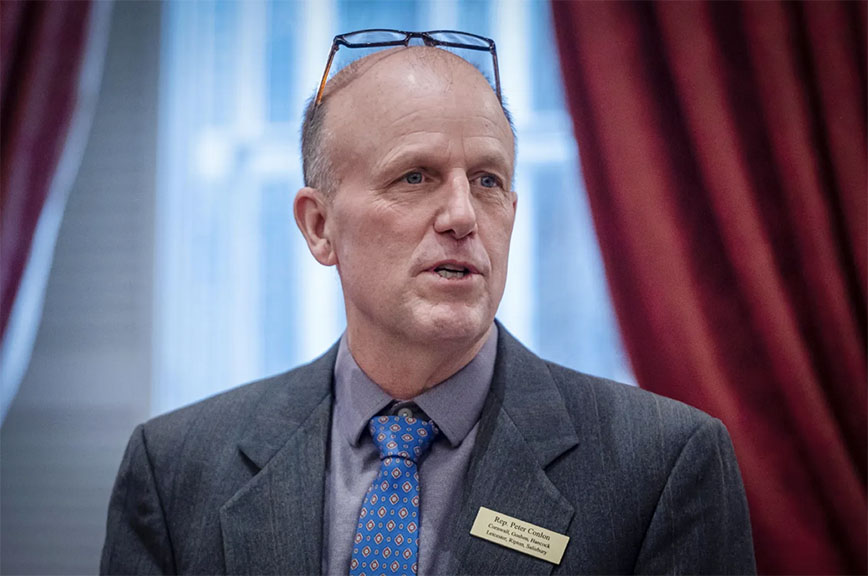
Submitted
Rep. Peter Conlon, D-Cornwall, is the chair of the House Committee on Education.
By Ethan Weinstein, VTDigger
On the first day of the 2024 legislative session, Jan. 3, state education officials presented lawmakers with the latest estimates for Vermont’s school construction needs — a whopping $6.3 billion in the next 21 years.
And that number, Agency of Education staff cautioned, is likely a significant underestimate.
Rep. Peter Conlon, D-Cornwall, chair of the House Committee on Education, called the figure “eye popping.” He signaled that his committee would make addressing school construction needs a priority this session.
The cost estimate came as part of a school facilities assessment ordered by the Legislature in 2021, which gathered baseline data on 384 school buildings in Vermont and translated the findings into cost projections for every district statewide. The Agency of Education expects to create a public dashboard with that data later this year.
From fiscal years 2000-2008, the state provided more than $280 million in construction aid to schools, but amid the Great Recession it suspended state assistance for such projects. This year, lawmakers will consider how the state could revive some funding, though Conlon made clear that footing the entire bill was out of the question.
The discovery of toxic chemicals called polychlorinated biphenyls in some of Vermont’s schools has further complicated the state’s education infrastructure needs. The Legislature previously set aside $32 million to reimburse school districts for PCB mitigation and remediation, a sum many local administrators expect will be insufficient.
With Gov. Phil Scott’s administration predicting an 18.5% rise in property taxes driven by a projected 12% increase in education spending, the cost of school construction could further strain local budgets.
Bill Donohue, the Agency of Education’s facilities program manager, told lawmakers that he could spend two hours qualifying his estimate with potential “unknown costs” that could increase the $6.3 billion figure, which amounts to about $300 million annually for 21 years.
“It could very well be $500 million a year,” he said. “It could be more.”
Cost of inaction
Yet the agency predicted the cost of inaction would prove even higher. If schools across the state spent an inflation-adjusted $33 million annually on construction, rather than $300 million, the cost of needed construction over the 21 years would increase by $7 billion, it estimated.
“If we’re starting a construction program and we’re not funding it equal to the need out there, there’s going to be this snowball carryover effect,” Donohue said.
A report from the school construction aid task force, a group responsible for examining Vermont’s school construction needs and possible funding structures, is expected to arrive by Feb. 1, laying out some recommendations on how to prioritize and pay for needed projects.
“The taskforce report will provide guidance,” Conlon said, “but we’re going to have a lot of big decisions to make.”

